Shortly after taking office in January, São Paulo’s new mayor, João Doria, posed for photos in front of Avenida 23 de Maio, Latin America’s longest street mural. Then he turned a spray-gun on it and covered the vibrant art with drab grey.Doria’s stunt might have kicked off his “Operation Beautiful City” — an initiative he launched on Jan. 14 to revitalize the city’s urban landscape, in part, by painting over graffiti — but it also reawakened a long-simmering feud between the city’s government and its graffiti artists.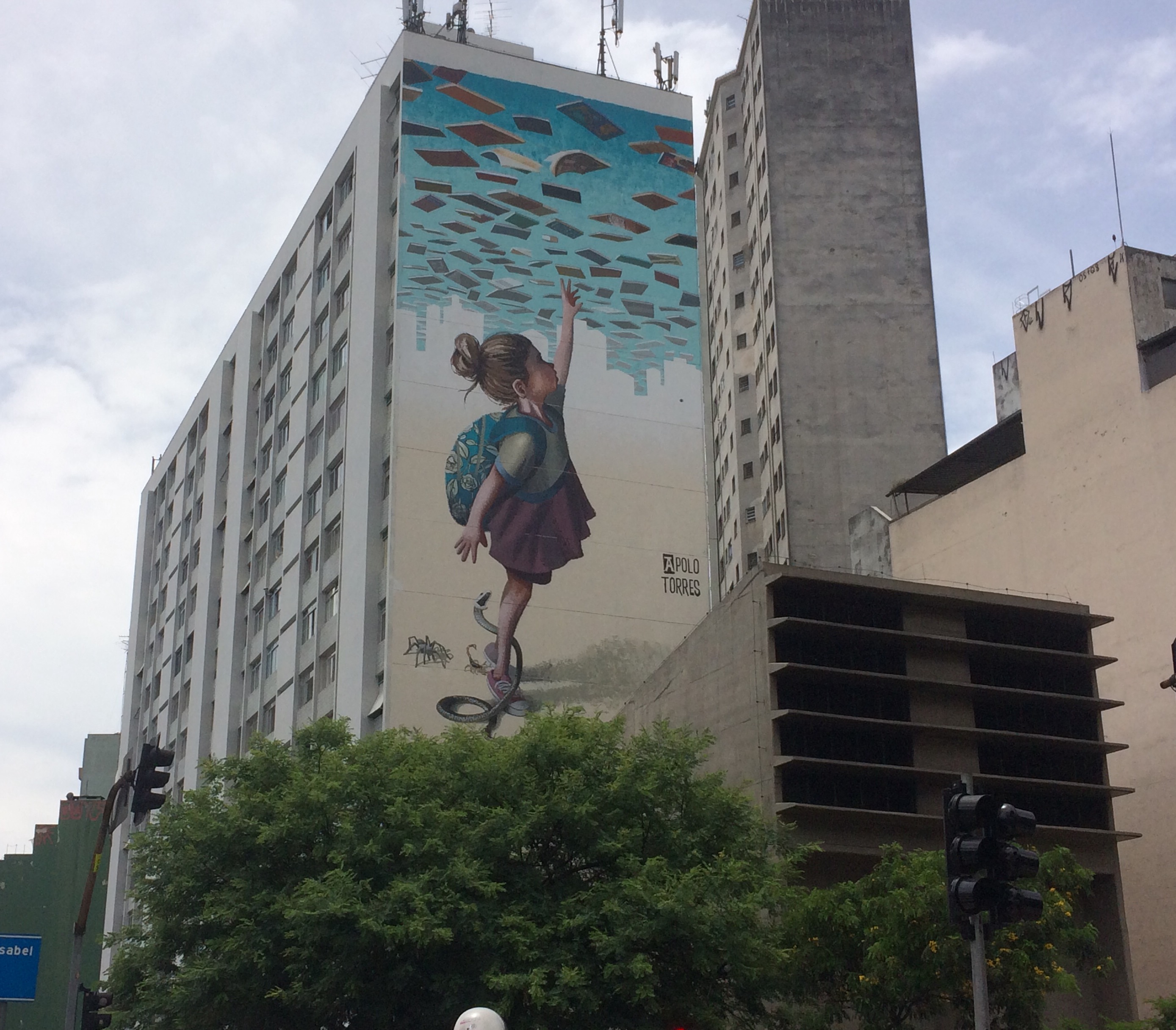 Many Paulistas saw Doria’s targeting of the 5.3km public artwork on 23 de Maio, which was commissioned by his predecessor Fernando Haddad in 2015, as a bid to wipe out his rival’s cultural legacy and shatter the tentative truce he built with graffiti artists.They were right.Doria’s media stunt immediately set off a spray war that is only starting to cool down now. In the weeks following Doria’s visit to Avenida 23 de Maio, artists and protesters combatted the encroaching grey tide by paint-bombing office blocks and smearing the asphalt with color by the tin-full, setting off a Sisyphean cycle for city workers tasked with painting the city grey again.São Paulo’s street art, injecting bursts of color into the thickets of concrete skyscrapers and revealing the city’s creative undercurrent, is famous across the globe and enjoys overwhelming support from Paulistas, but local lawmakers have historically taken a dimmer view. Doria’s disciplinarian rhetoric — “Leniency is over! It’s time for authority!” featured regularly in his campaign — harkens back to sanitizing “Operations” of yesteryear: Clean City in 2006 and Operation Suffocate in 2012.
Many Paulistas saw Doria’s targeting of the 5.3km public artwork on 23 de Maio, which was commissioned by his predecessor Fernando Haddad in 2015, as a bid to wipe out his rival’s cultural legacy and shatter the tentative truce he built with graffiti artists.They were right.Doria’s media stunt immediately set off a spray war that is only starting to cool down now. In the weeks following Doria’s visit to Avenida 23 de Maio, artists and protesters combatted the encroaching grey tide by paint-bombing office blocks and smearing the asphalt with color by the tin-full, setting off a Sisyphean cycle for city workers tasked with painting the city grey again.São Paulo’s street art, injecting bursts of color into the thickets of concrete skyscrapers and revealing the city’s creative undercurrent, is famous across the globe and enjoys overwhelming support from Paulistas, but local lawmakers have historically taken a dimmer view. Doria’s disciplinarian rhetoric — “Leniency is over! It’s time for authority!” featured regularly in his campaign — harkens back to sanitizing “Operations” of yesteryear: Clean City in 2006 and Operation Suffocate in 2012.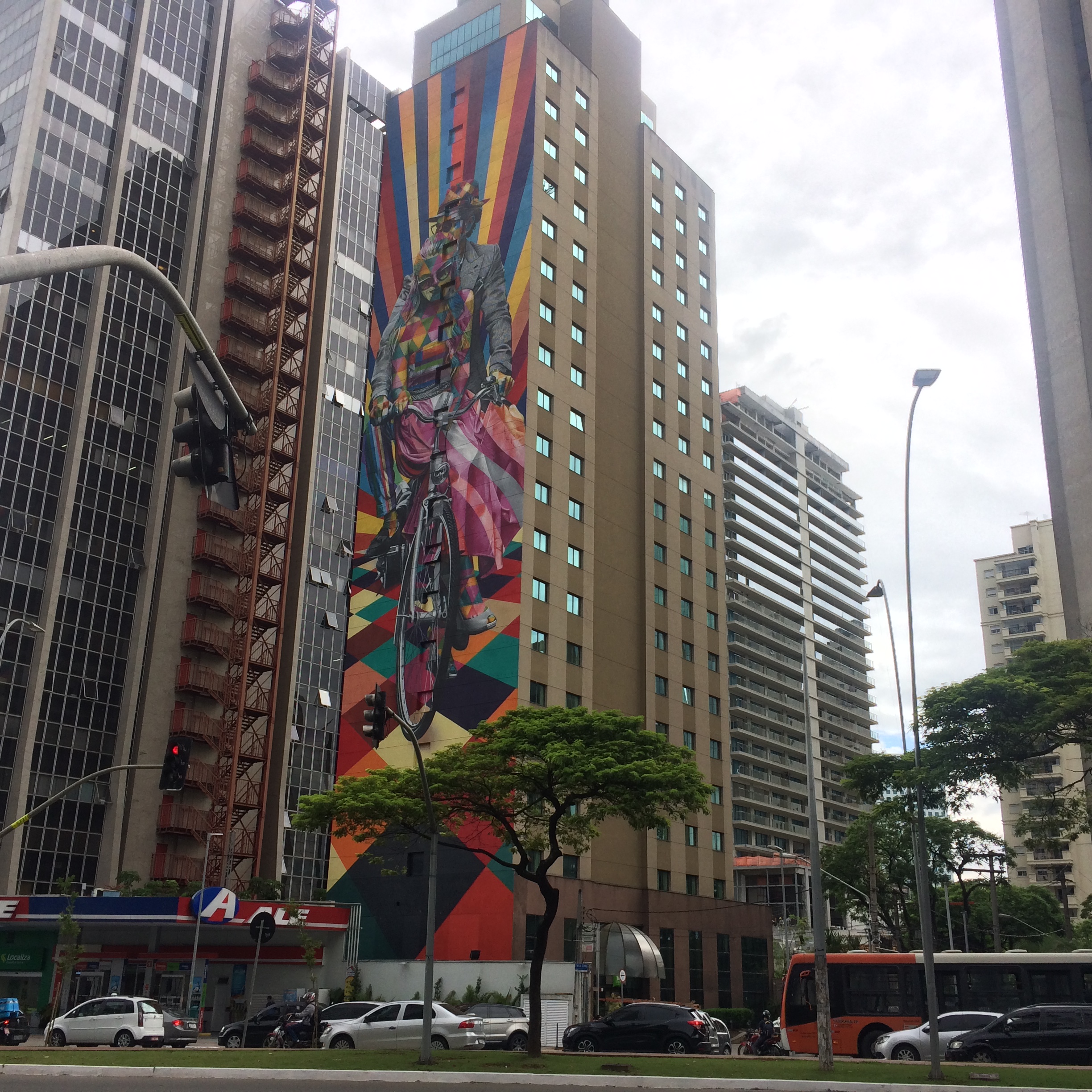 Enivo (real name Marcus Vinícius), a well-known graffiti artist from the Grajaú neighborhood and a curator of the 23 de Maio project, compared the latest crackdown to the mythical ouroboros snake that eats itself: “The last mayor was OK for graffiti, but before him São Paulo had the same battles. The city was painted grey and the writers had to fight.”
Enivo (real name Marcus Vinícius), a well-known graffiti artist from the Grajaú neighborhood and a curator of the 23 de Maio project, compared the latest crackdown to the mythical ouroboros snake that eats itself: “The last mayor was OK for graffiti, but before him São Paulo had the same battles. The city was painted grey and the writers had to fight.”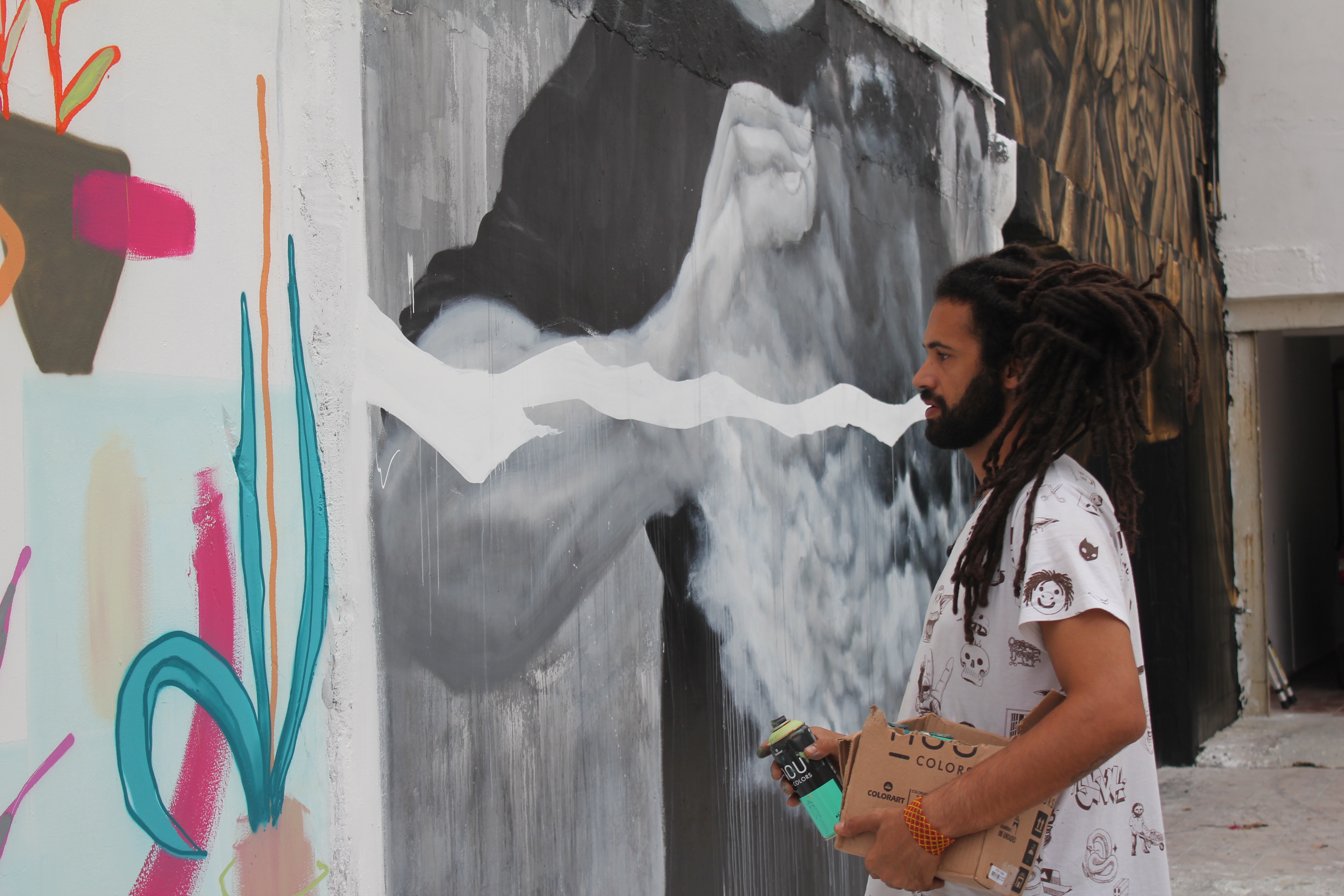 Doria attempted to quell public outrage in late January when he proposed the creation of an open-air museum dedicated to the city’s graffiti. Though it was seen as a positive gesture, Enivo says it missed the mark. “If you only paint in authorized areas, you are not a graffiti artist; you are a muralist.”The graffiti war has cooled since its surge in January and February, but the debate rages on in Brazil’s largest city. On Feb. 23, a ruling preventing Doria from painting over graffiti without permission from the department for historic and cultural preservation was overruled. The same week, Doria’s tougher laws and increased fines for those caught spraying graffiti were implemented. And during SãoPaulo’s Carnival, many Paulistas dressed as blank walls and sang songs protesting Doria’s crackdown.
Doria attempted to quell public outrage in late January when he proposed the creation of an open-air museum dedicated to the city’s graffiti. Though it was seen as a positive gesture, Enivo says it missed the mark. “If you only paint in authorized areas, you are not a graffiti artist; you are a muralist.”The graffiti war has cooled since its surge in January and February, but the debate rages on in Brazil’s largest city. On Feb. 23, a ruling preventing Doria from painting over graffiti without permission from the department for historic and cultural preservation was overruled. The same week, Doria’s tougher laws and increased fines for those caught spraying graffiti were implemented. And during SãoPaulo’s Carnival, many Paulistas dressed as blank walls and sang songs protesting Doria’s crackdown.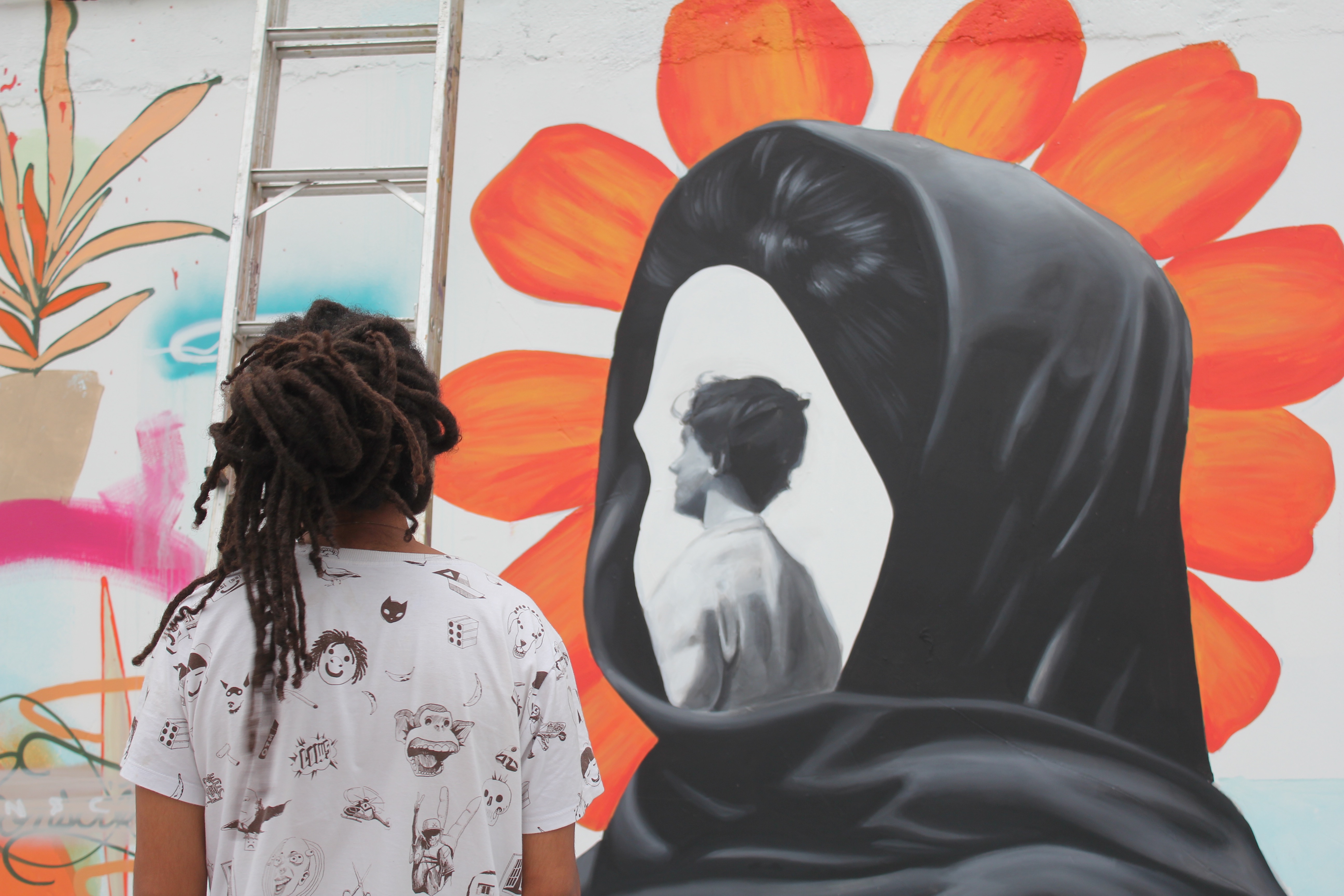 That the outrage hasn’t died down shouldn’t come as a surprise — 85 percent of Paulistas are in favor of graffiti in the city, according to a recent survey published by Datafolha.Yet there is a third element of São Paulo’s graffiti scene that doesn’t enjoy the same support as the street art displayed on Avenida 23 de Maio — Pichação, a style of graffiti born in the 1980s that today blankets much of the city. Pichação is a product of graffiti gangs known as pichadores, whose members make death-defying ascents up high-rises to paint political protestations in black. The aim: to “recapture the city for the excluded.”
That the outrage hasn’t died down shouldn’t come as a surprise — 85 percent of Paulistas are in favor of graffiti in the city, according to a recent survey published by Datafolha.Yet there is a third element of São Paulo’s graffiti scene that doesn’t enjoy the same support as the street art displayed on Avenida 23 de Maio — Pichação, a style of graffiti born in the 1980s that today blankets much of the city. Pichação is a product of graffiti gangs known as pichadores, whose members make death-defying ascents up high-rises to paint political protestations in black. The aim: to “recapture the city for the excluded.”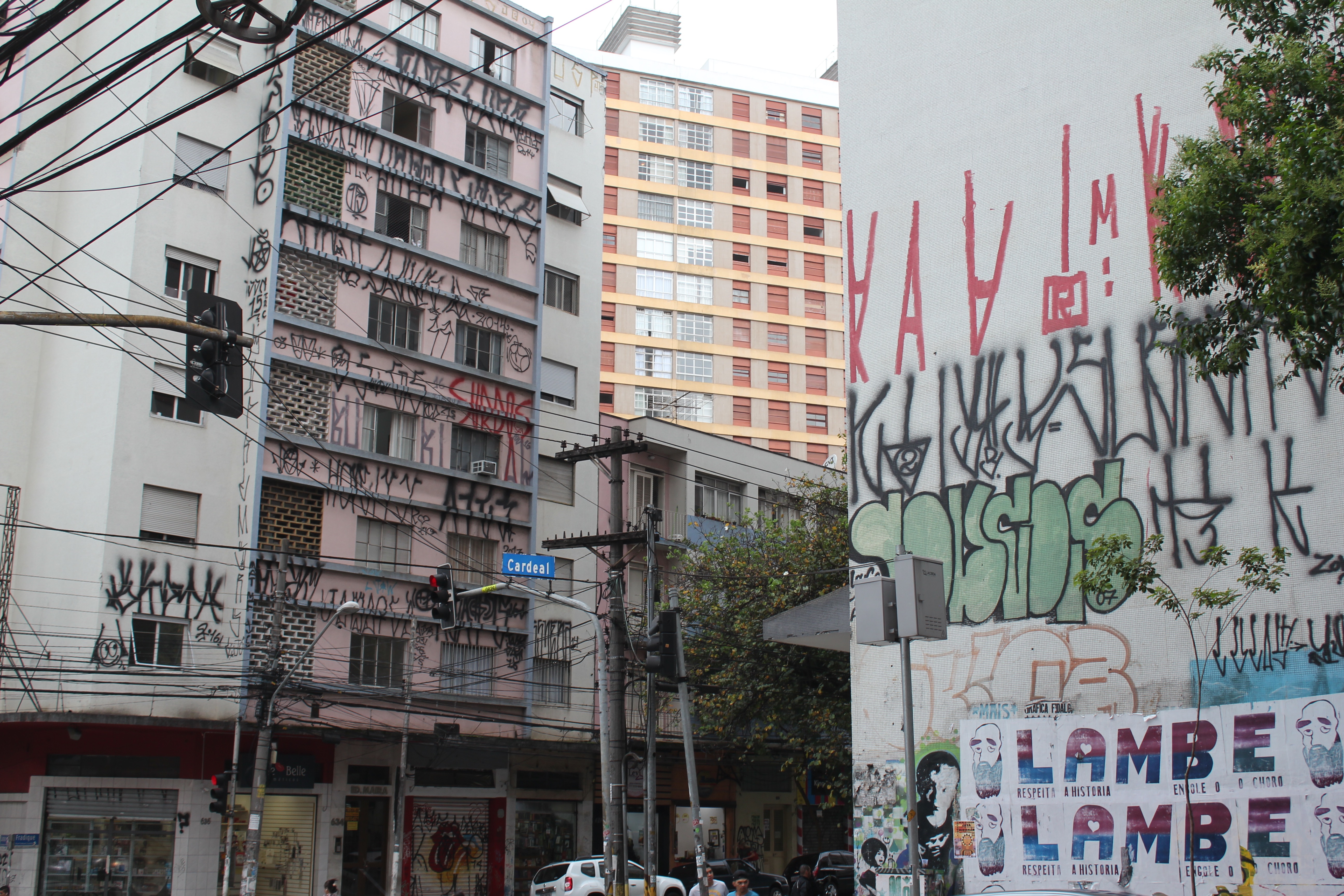 Yet while politicians try to divide and conquer the city’s pichadores and graffiti artists, by labeling the former “vandals” and the latter “artists,” there is no bad blood between the groups themselves. “For some young people, the only way they exist is through pichação. It is [their] voice, but Doria doesn’t understand,” Enivo said.Doria isn’t alone in wanting a cleaner city when it comes to pichação, however. Many Paulistas see pichação as vandalism and back the punitive clampdown involving increased arrests and heavier fines. Retired civil servant Vera Texeiras, who has lived near the tourist destination Beco do Batman for 30 years, is one of them. She says she draws the line at pichação: “Art is one thing, pichação is another. Right here, this is art. My wall is beautiful.”
Yet while politicians try to divide and conquer the city’s pichadores and graffiti artists, by labeling the former “vandals” and the latter “artists,” there is no bad blood between the groups themselves. “For some young people, the only way they exist is through pichação. It is [their] voice, but Doria doesn’t understand,” Enivo said.Doria isn’t alone in wanting a cleaner city when it comes to pichação, however. Many Paulistas see pichação as vandalism and back the punitive clampdown involving increased arrests and heavier fines. Retired civil servant Vera Texeiras, who has lived near the tourist destination Beco do Batman for 30 years, is one of them. She says she draws the line at pichação: “Art is one thing, pichação is another. Right here, this is art. My wall is beautiful.”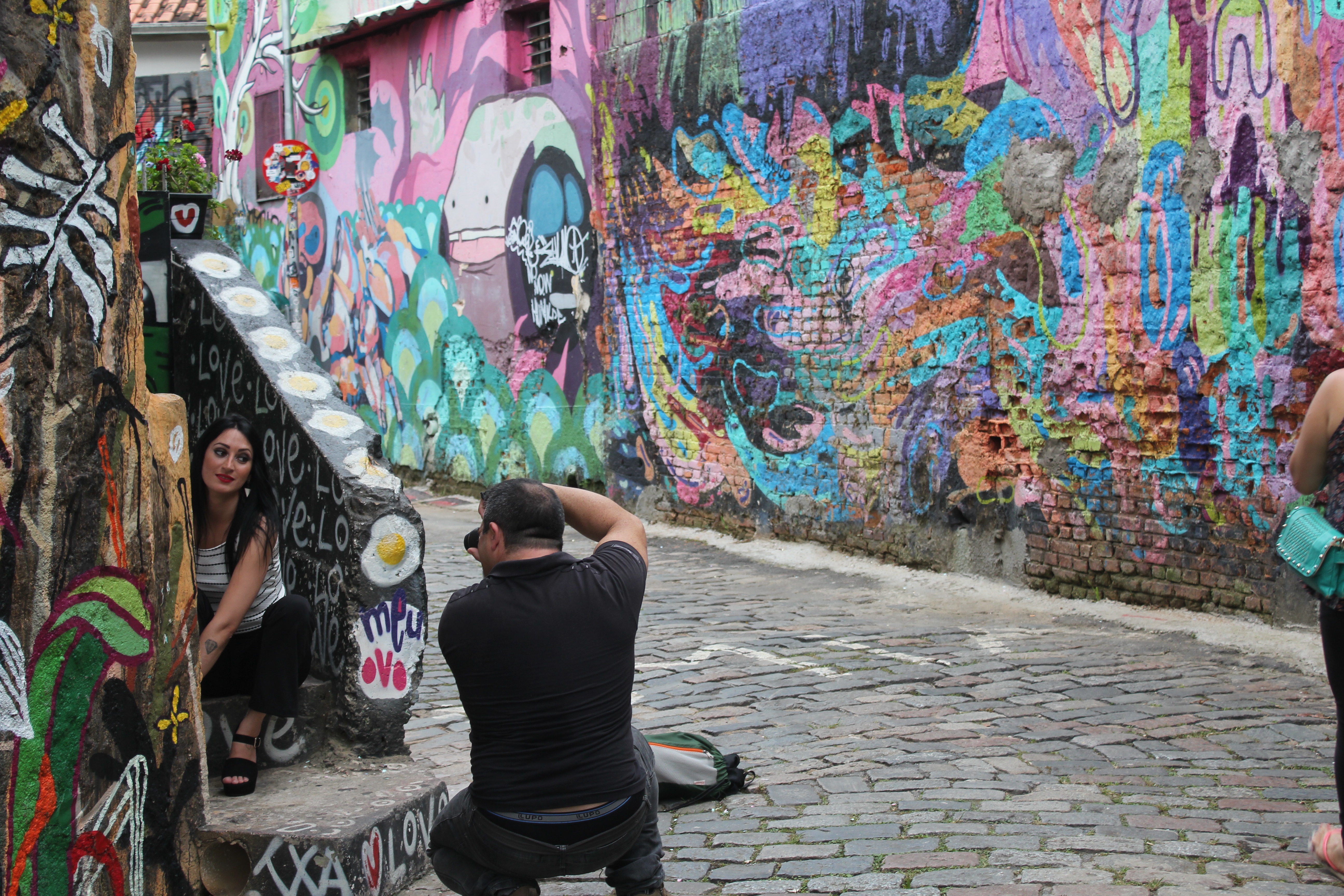 The question now scrawled on São Paulo’s streets is “Cidade Linda pra quem?” (“Beautiful city for who?”) a slogan echoing protests that featured in the run-up to the costly, and ultimately failed, urban facelifts of the 2014 FIFA World Cup and 2016 Rio Olympics.“In São Paulo, and in Brazil, we have problems other than graffiti. Like poverty, education, and health,” Enivo said.Cover photo: São Paulo’s new mayor João Doria spray paints Avenida 23 de Maio, Latin America’s longest street mural, to kick of his ‘Operation Beautiful City’ program.
The question now scrawled on São Paulo’s streets is “Cidade Linda pra quem?” (“Beautiful city for who?”) a slogan echoing protests that featured in the run-up to the costly, and ultimately failed, urban facelifts of the 2014 FIFA World Cup and 2016 Rio Olympics.“In São Paulo, and in Brazil, we have problems other than graffiti. Like poverty, education, and health,” Enivo said.Cover photo: São Paulo’s new mayor João Doria spray paints Avenida 23 de Maio, Latin America’s longest street mural, to kick of his ‘Operation Beautiful City’ program.
Advertisement


Advertisement


Advertisement

